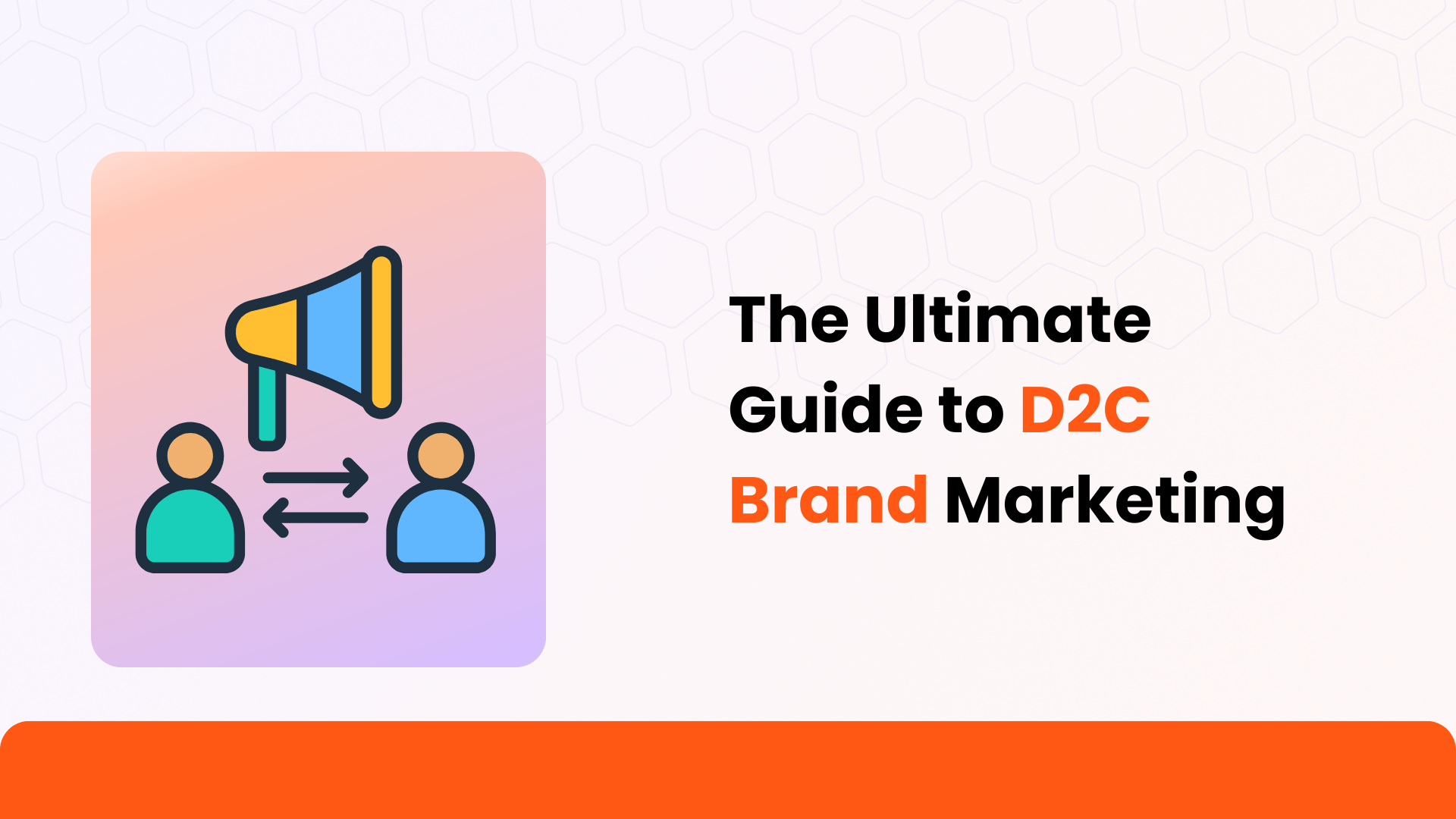If you have been paying attention to D2C brands in India, you will notice how they reshape the traditional retail landscape. By selling products directly to customers, they bypass intermediaries and create powerful new ways to engage. To grow in a competitive D2C landscape, you need informed insights into audience preferences and market performance indicators.
Here is how brands can stand out and scale effectively:
- Build a Strong Brand Identity
At the heart of every D2C brand’s success is its identity. It defines who you are, what you stand for, and how customers perceive you.
- Define Your Value Proposition: What makes you unique? Focus on areas like sustainability, affordability, or innovation
- Create a Sticky Brand Voice: Ensure your messaging is consistent across social media, emails, and even product packaging
- Improve Visual Identity: Professional logos, typography, and colour schemes help create a personality for your brand
Example: Imagine a D2C beauty brand promoting clean beauty. Its minimalist packaging and soft natural colours instantly reflect its eco-friendly values
- Develop a Robust Social Media Presence
Social media is the backbone of D2C marketing. It gives you a direct line to your audience and helps create a community.
- Choose the Right Platforms: Identify where your audience spends the most time. Use Instagram for visuals, TikTok for trends, and LinkedIn for B2B opportunities.
- Create a Content Strategy: Storytelling, product demonstrations, customer testimonials, and user-generated content work wonders.
- Engage Actively: Respond quickly to comments, participate in trending topics, and use polls or Q and A sessions to connect more deeply with your community.
- Utilize Influencer Marketing
Influencer marketing has become a game-changer for D2C brands by amplifying reach and credibility.
- Collaborate with Micro and Nano Influencers: These cost-effective influencers have highly engaged niche audiences.
- Create Authentic Partnerships: Let influencers share their honest experiences with your products to build trust.
- Measure Campaign ROI: Platforms like Qoruz help you track engagement, reach, and conversions for each campaign
- Seasonal Campaigns: Tap into festive seasons like Diwali, Christmas or any other festival to maximize visibility
- Optimize Your Website for Conversions
Your website is your storefront. Making it user-friendly and conversion-focused is non-negotiable
- Simplify Navigation: Design intuitive menus so customers can quickly find what they need
- Mobile Optimization: Over half of online shopping happens on mobile. Your website needs to load fast and work seamlessly
- Clear CTAs: Buttons like Shop Now and Add to Cart should be visible and actionable
- Showcase Social Proof: Highlight customer reviews, testimonials, and influencer shoutouts to build credibility
- Master the Art of Performance Marketing
Paid ads are a proven way to scale D2C brands while delivering measurable ROI
- Search Ads: Capture high-intent customers with Google Ads
- Social Media Ads: Platforms like Instagram, Facebook, and TikTok are perfect for visual storytelling
- Retargeting: Use ads to re-engage visitors who browsed but did not buy
Pro Tip: Use insights from influencer campaigns to refine your ad targeting for better results
- Use Email Marketing for Personalization
Email marketing remains one of the most effective tools for driving repeat business and nurturing customer relationships
- Segment Your Audience: Group customers based on behavior, preferences, or purchase history
- Automate Workflows: Set up welcome emails, abandoned cart reminders, and post-purchase follow-ups
- Offer Value-Driven Content: Share exclusive deals, product updates, and lifestyle tips to keep customers engaged
- Leverage Data and Analytics
Data-driven decisions separates successful brands from the rest
- Understand Customer Insights: Use tools like Google Analytics and CRM platforms to map the customer journey
- A B Test Everything: Test headlines, visuals, and calls to action to see what works best
- Use Predictive Analytics: Analyze past data to forecast trends, optimize inventory, and plan campaigns
- Build Trust Through Authenticity
In a crowded market, brands that feel real always stand out.
- Be Transparent: Share upfront information about pricing, shipping, and additional fees or anything customers need to take care of the product.
- Highlight Sustainability Efforts: Showcase ethical practices, eco-friendly products, or charitable contributions.
- Share Customer Stories: Real experiences from customers can help build trust and relatability.
- Experiment With Emerging Trends
To stay ahead, D2C brands need to keep up with the latest trends and technologies
- Social Commerce: Integrate Instagram Shopping or Facebook Shops to make purchasing seamless
- AR and VR Experiences: Allow virtual try-ons with AR filters or offer immersive VR experiences for customers
- Live Shopping: Host live events on Instagram or Facebook to drive excitement and urgency
- Focus on Retention With Loyalty Programs
Keeping an existing customer is far cheaper than acquiring a new one. Loyalty programs help ensure repeat business
- Reward Systems: Offer points for purchase referrals or sharing on social media
- Exclusive Perks: Provide early access to sales, special discounts, or limited-edition products
- Personalize Experiences: Tailor offers based on past purchases and preferences




Leave a Comment